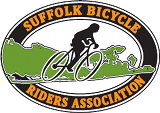http://www.newsday.com/long-island/li-bike-fatality-rate-highest-in-metro-area-1.3023831
Bicyclists pedal roadways at their peril on Long Island, where at least 64 cyclists have been killed in crashes since 2005.
The bicycle crash death rate on Long Island far exceeds that of New York City, New Jersey and Connecticut, according to a Newsday analysis of federal crash data. Forty-three cyclists have been killed in Suffolk County and 21 in Nassau since 2005, records from the U.S. Department of Transportation, the Nassau and Suffolk police departments and Newsday's archive show.
Suffolk is particularly dangerous for travelers on two wheels: There are 4.6 bicyclists' deaths per million people in the county -- more than double the New York State average.
MORE: Map of bicyclist fatalities on LI | Poll
PHOTOS: Dangers of bicycling on LI
"You have to be a defensive cyclist on the roads of Long Island," said Tom Flanagan, 41, co-owner of Adventure Cycles and Sports in Farmingdale. "Long Island was definitely made for the automobile. It's a hard fight."
In 2009, one of Flanagan's customers, a 22-year-old Nassau Community College student, was fatally struck in Bethpage by a dump truck.
To be sure, bicycle crashes happen for many reasons. Motorists are at fault in some, and bicyclists in others. Law enforcement officials and cyclists themselves say that both drivers and bicyclists must be more alert, respect traffic laws and share the road.
Victims were overwhelmingly male, and their ages ranged from 3 to 76. Seven were age 12 or younger. While the crashes occurred both during the day and at night, nearly one-third happened between 8 and 11 p.m.
More than a quarter occurred on high-speed, multilane arterial roads, such as Sunrise Highway and Hempstead Turnpike. Smaller roads also proved deadly, with three people killed in two crashes on Granny Road in Farmingville since 2005.
Of the 28 deaths for which race was listed, Hispanics made up 43 percent of the victims, an outsize portion for their segment of the population. Some 54 percent were listed as non-Hispanic white.
Latino immigrants are involved in a disproportionate number of bicycle crashes because of their low incomes and the inability of some to obtain driver's licenses, said the Rev. Allan B. Ramirez of Brookville Reformed Church, longtime activist for Latinos on the Island.
In Suffolk County, workers "often need to get to work either by bicycle or on foot since public transportation is inadequate," circumstances that lead to bicycle crashes, he said in an email.
The fatal crashes were caused by a range of contributing factors, from drunken drivers to cyclists who failed to stop at red lights.
In other cases, drivers told police they didn't see the bike until it was too late -- a typical scenario, said Det. Lt. Matt Sullivan, who investigates fatal bicycle crashes as commanding officer of the Suffolk County Police Department's Third Squad.
"The bicyclist has to be looking to avoid a crash," Sullivan said. "The number-one thing for bicyclists should be to assume that they cannot be seen."
Bicyclists and transportation advocates say Long Island needs safer routes for cyclists, including more bike lanes and uninterrupted shoulders.
"Wide, paved shoulders are a blessing," said Anthony Barone, 78, former president of the Huntington Bicycle Club.
In November, he was biking on Vanderbilt Parkway in Dix Hills when a driver hit the gas pedal before the light turned green and came right at him, he said.
Barone steered into a ditch and woke up in the hospital with two broken ribs and a mild concussion.
"Without the bike infrastructure, without the pedestrian infrastructure, there's a dangerous environment for all people who are using the roads, including drivers," said Ryan Lynch, senior planner for the Tri-State Transportation Campaign.
The transportation campaign and other advocacy groups are pushing for Gov. Andrew M. Cuomo to sign "Complete Streets" legislation that would require the designers of major road reconstruction and construction projects to consider all users of the road, and incorporate elements such as pedestrian islands and bike lanes.
The far higher death rate in Suffolk was surprising to some Long Island cyclists, who said they prefer Suffolk's roads to the heavily trafficked streets in Nassau. Cyclists and transportation advocates suggested the greater numbers could be attributed to higher vehicle speeds on Suffolk's less-congested roads, or to more people bicycling on the county's roadways.
There are more bicycle clubs in Suffolk, and a rough tally of the Island's road miles shows that Suffolk's road network is more extensive, with more than 6,300 miles compared with Nassau’s 4,000.
Rules of the road
Share the road: Bicyclists have the right to the road on most public highways but are not allowed on expressways.
Keep your distance: Bicyclists have the same rights and responsibilities as drivers. Drivers must pass cyclists at a safe distance; a berth of 3 feet suggested.
Go with the flow: Bicyclists must ride with traffic.
Wear helmets: Required for bicyclists 14 and younger.
Sound off: Bicycles must be equipped with a bell or horn that can be heard at least 100 feet away.
Lights on: Bicycles ridden between a half-hour after sunset and a half-hour before sunrise must have a white front headlight and a red or amber taillight.


